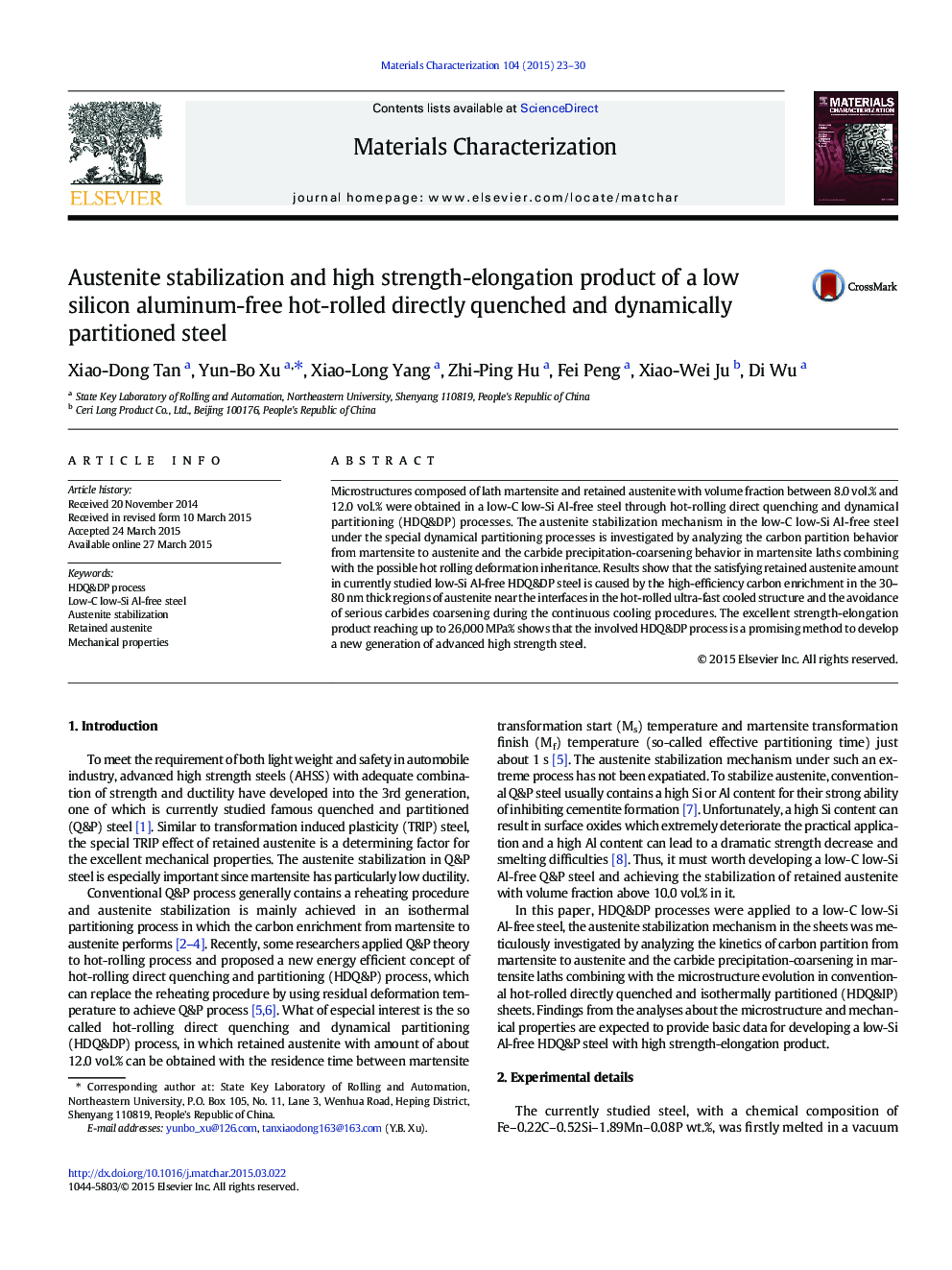| Article ID | Journal | Published Year | Pages | File Type |
|---|---|---|---|---|
| 1570896 | Materials Characterization | 2015 | 8 Pages |
•HDQ&DP processes were applied to a low-C low-Si Al-free steel.•Effective partitioning time during the continuous cooling processes is 1–220 s.•Retained austenite with volume fraction between 8.0 vol. % and 12.0 vol. % has been obtained.•The special austenite stabilization mechanism has been expounded.
Microstructures composed of lath martensite and retained austenite with volume fraction between 8.0 vol.% and 12.0 vol.% were obtained in a low-C low-Si Al-free steel through hot-rolling direct quenching and dynamical partitioning (HDQ&DP) processes. The austenite stabilization mechanism in the low-C low-Si Al-free steel under the special dynamical partitioning processes is investigated by analyzing the carbon partition behavior from martensite to austenite and the carbide precipitation-coarsening behavior in martensite laths combining with the possible hot rolling deformation inheritance. Results show that the satisfying retained austenite amount in currently studied low-Si Al-free HDQ&DP steel is caused by the high-efficiency carbon enrichment in the 30–80 nm thick regions of austenite near the interfaces in the hot-rolled ultra-fast cooled structure and the avoidance of serious carbides coarsening during the continuous cooling procedures. The excellent strength-elongation product reaching up to 26,000 MPa% shows that the involved HDQ&DP process is a promising method to develop a new generation of advanced high strength steel.
